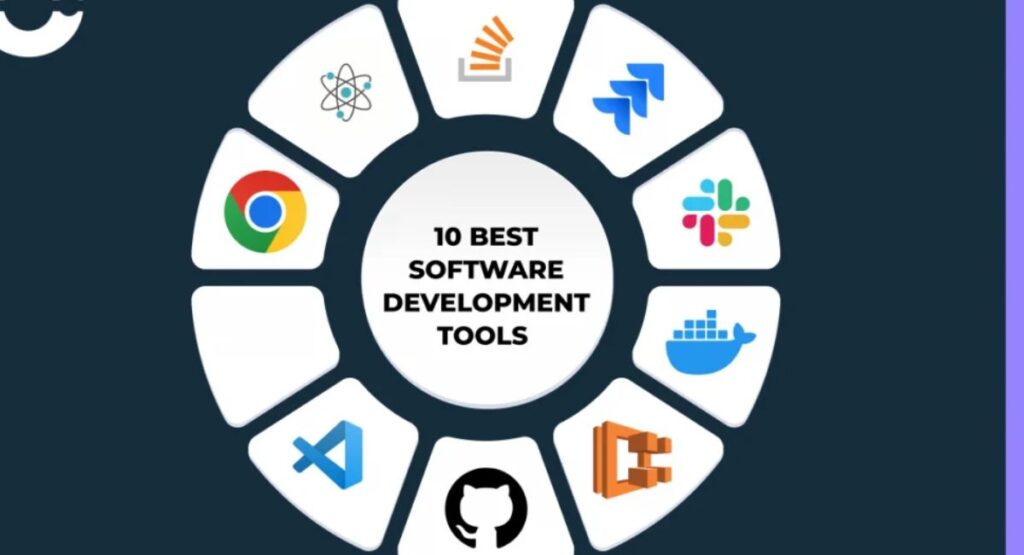Developing new software can be exciting yet challenging. One great framework to consider is Oxzep7, which uses Python. This guide will walk you through the process step by step, making it easy to understand and implement.
In this article, we will cover the key aspects of developing software using Oxzep7, including its purpose, planning, development tools, user experience (UX) design, testing, security measures, scalability, and post-launch maintenance.
By the end, you will have a comprehensive understanding of how to create effective software solutions using Oxzep7.
Understanding the Purpose of Oxzep7 Software
Oxzep7 is a powerful platform designed to help developers create efficient, scalable, and intelligent applications. By combining Python with advanced AI features, Oxzep7 enables quick coding and better performance.
Developers choose Oxzep7 because it simplifies complex tasks, allowing them to focus on building high-quality software solutions.
Key Features of Oxzep7
- Speed: Write and test code more rapidly.
- Modularity: Components operate independently, enhancing flexibility.
- Scalability: Easily expand features without breaking the system.
- AI Tools: Integrated tools suggest improvements during the coding process.
Understanding the purpose of Oxzep7 is crucial for developers. It allows them to leverage its strengths and create applications that meet user needs effectively.
The Role of Semantic Entities and User Needs
Understanding user needs is crucial in software development. Semantic entities help identify the key components of user requirements, leading to more effective design and functionality. By focusing on user needs, developers can create software that is not only functional but also enjoyable to use.
Importance of Semantic Entities
- User-Centric Design: Focus on what users truly need to enhance user satisfaction. This approach ensures that the software is relevant and useful.
- Better Communication: Clarifies ideas between developers and users to improve collaboration. When everyone is on the same page, it leads to better outcomes.
- Enhanced Features: Tailor software functionality to meet specific user needs. This customization can significantly improve user engagement.
Step 1: Planning and Defining the Scope
Every successful project begins with solid project planning. This step helps define goals, understand your audience, and identify core features. A well-defined scope can save time and resources in the long run.
Core Questions to Consider
- What specific problem does the software solve?
- Who is the target user?
- How will you measure success?
Feature Breakdown
Make a list of essential features to prioritize development tasks. This helps in focusing on what truly matters to your users.
| Feature | Description |
| User Authentication | Secure login for users |
| Data Processing | Efficient handling of user data |
| Reporting | Generate insightful reports based on user input |
| Notifications | Alert users about important updates |
| Customization | Allow users to personalize their experience |
Using Development Tools

Choosing the right development tools is vital for effective software creation. The right tools streamline the development process and help maintain code quality. Here are some essential tools for developing Oxzep7 software:
- Python 3.11 or newer: The primary programming language for building applications. Python is known for its simplicity and readability, making it an ideal choice for beginners and experienced developers alike.
- Pip: A package manager for installing and managing software packages. This tool simplifies the process of adding libraries and dependencies to your project.
- Visual Studio Code or PyCharm: Popular code editors for writing and debugging code. These editors offer features like syntax highlighting, code completion, and debugging tools.
- Git: A Version control system for tracking changes in your codebase. Using Git helps manage collaborative projects and keeps a history of code changes.
Step 2: Choosing the Right Tech Stack
Selecting the right technology stack is crucial for successful software development. A tech stack includes programming languages, frameworks, and hosting platforms. The right stack can greatly influence the performance and maintainability of your software.
Programming Languages
While Oxzep7 is based on Python, consider using other coding languages like JavaScript for front-end development to enhance user interaction. Here are some popular languages to consider:
- Python: Ideal for backend development due to its simplicity and extensive libraries.
- JavaScript: Essential for frontend development, allowing you to create interactive user interfaces.
- HTML/CSS: Fundamental for structuring and styling web applications.
Platforms and Hosting
Choosing a reliable web hosting platform is essential for application performance. Here are some popular options:
| Platform | Pros | Cons |
| AWS | Highly scalable and flexible | Complex setup for beginners |
| Azure | Excellent for Microsoft integration | Costs can escalate quickly |
| Google Cloud | Strong AI capabilities | Steeper learning curve for newcomers |
| Heroku | User-friendly interface | Limited free-tier resources |
When choosing a hosting platform, consider factors like cost, ease of use, scalability, and support for the technology stack you’ve chosen.
Step 3: Designing for User Experience (UX)
A good user experience (UX) is vital for software adoption. Designing with UX principles ensures users find the software intuitive and easy to navigate. A well-designed interface enhances user satisfaction and retention.
Practical UX Tips
- Keep it Simple: A clean design enhances usability. Avoid clutter and focus on essential elements.
- Responsive Design: Ensure compatibility across various devices. Users should have a seamless experience whether they are on a desktop, tablet, or smartphone.
- User Feedback: Regularly collect user input to refine the interface and improve overall satisfaction. Tools like surveys and usability tests can help gather valuable insights.
Common UX Mistakes to Avoid
- Overloading with Features: Too many options can confuse users. Focus on core functionalities that address user needs.
- Ignoring User Testing: Skipping real-user tests can lead to poor design choices. Testing helps identify usability issues before launch.
- Neglecting Accessibility: Ensure the software is usable for everyone, including those with disabilities. Consider using larger fonts, color contrast, and alternative text for images.
Step 4: Development and Testing
Once planning is complete, it’s time to focus on software development. This includes coding and rigorous testing to ensure functionality. Effective testing is crucial for delivering quality software.
READ THIS BLOG: 350+ MenBoostermark Software Program: Unlocking Confidence
User Testing
Conduct usability testing by allowing real users to interact with the software. Gather feedback to identify areas for improvement. User testing can be conducted in different phases, including alpha and beta testing.
Unit Testing
Implement unit testing to verify that individual components function correctly. Use frameworks like pytest for automated testing. Unit tests help catch bugs early in the development process, reducing the cost of fixing issues later.
Agile Development Practices
Adopt Agile methodologies to remain flexible. This approach allows for continuous improvement and quick adjustments based on user feedback. Agile practices include:
- Sprints: Short development cycles that allow for rapid iterations.
- Daily Stand-ups: Regular meetings to discuss progress and challenges.
- Retrospectives: Reflections on what went well and what could be improved.
Step 5: Implementing Security Measures

Cybersecurity is critical in software development. Protecting user data and ensuring safe operations should always be a priority. Security measures must be integrated into the development process from the beginning.
Key Security Practices
- Data Encryption: Safeguard sensitive information through encryption techniques. Use SSL/TLS for secure communication over the internet.
- Input Validation: Sanitize user inputs to prevent security vulnerabilities. This helps protect against common attacks like SQL injection.
- Access Controls: Restrict features to authorized users only. Implement role-based access control (RBAC) to enforce permissions.
Common Security Vulnerabilities
- SQL Injection: Attackers can exploit poorly secured inputs to manipulate databases. Always use prepared statements for database queries.
- Cross-Site Scripting (XSS): Malicious scripts can be injected into web applications. Use content security policies (CSP) to mitigate this risk.
- Insecure APIs: Ensure APIs are well-secured to prevent unauthorized access. Regularly review and update API security measures.
Step 6: Ensuring Scalability
As your software grows, it must handle increased loads efficiently. Scalability is essential for long-term success. A scalable application can accommodate a growing number of users without performance degradation.
Strategies for Scalability
- Modular Architecture: Design software to allow easy updates and expansions. Modular components can be updated independently, reducing downtime.
- Load Balancing: Distribute traffic evenly across servers to avoid overload. This ensures that no single server becomes a bottleneck.
- Database Optimization: Use efficient queries and indexing for faster data retrieval. Regularly monitor database performance to identify slow queries.
Real-World Scalability Challenges
- Managing Increased Traffic: Prepare for sudden spikes in user activity. Implement auto-scaling solutions to handle traffic fluctuations.
- Data Storage Needs: Plan for growing data requirements effectively. Consider using cloud storage solutions that can scale with your needs.
- Performance Monitoring: Regularly check performance metrics to identify bottlenecks. Use monitoring tools to track application performance in real-time.
Step 7: Launching and Post-Launch Maintenance
Once development is complete, it’s time to launch your software. However, the work doesn’t stop there. Post-launch maintenance is critical for the long-term success of your application.
Launch Strategies
- Soft Launch: Release to a small audience first to gather initial feedback. This allows you to make adjustments based on real user input.
- Marketing Campaign: Promote your software through various channels to reach a broader audience. Use social media, email marketing, and content marketing to create buzz.
Feedback Loop
Establish a feedback collection system to continually gather user insights. This helps make necessary adjustments post-launch. Utilize tools like surveys, user interviews, and analytics to understand user behavior.
Ongoing Maintenance
Regular maintenance is crucial for software health. This includes fixing bugs, updating features, and ensuring robust security. Create a maintenance schedule to regularly review and optimize your application.
Frequently Asked Questions?
How to Develop Software in Python?
To develop software in Python, start by defining your project requirements and scope. Then, choose the right tools and libraries, write your code, and test thoroughly before deployment.
Can Python Be Used to Create Software?
Yes, Python can be used to create various types of software, including web applications, desktop applications, and data analysis tools. Its versatile libraries and frameworks make it an excellent choice for many projects.
Is Python Good for Software Development?
Python is highly regarded for software development due to its readability, simplicity, and extensive community support. It allows for rapid development and easy integration with other technologies.
What is the Salary of a Python Developer?
The salary of a Python developer varies by experience, location, and industry, typically ranging from $70,000 to over $120,000 per year in the United States. Experienced developers in specialized fields can earn significantly more.
Which Software is Best to Use Python?
Popular software for Python development includes Integrated Development Environments (IDEs) like PyCharm, Visual Studio Code, and Jupyter Notebook. These tools offer features like debugging, code completion, and project management.
Conclusion
Developing Oxzep7 software can be an exciting journey filled with learning opportunities. By following these steps—planning, choosing the right tools, ensuring a great user experience, and focusing on security—you can create a successful application.
Remember, the software development process is ongoing. Keep learning, adapting, and improving based on user feedbacedication and the right approach, your Oxzep7 software can thrive in the competitive tech landscape.

jack is a seasoned SEO expert with a passion for content writing, keyword research, and web development. He combines technical expertise with creative strategies to deliver exceptional digital solutions.







